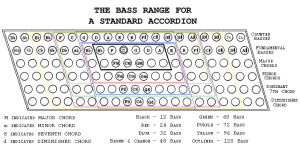As an organist, I have always been a bit of a "pipes only" snob but am rethinking that as I play the newer digitally sampled organs.
oh my
newer ? hehehe.. in 1971 Allen Organs went digital..
Galanti-Ahlborn were not far behind
but i must loop you in on some of the "secrets" inside Roland
Keyboard products
first of all, the organs in the modern FR models are primarily Hammond
mostly because the "organ-accordion" history and legacy is so
closely aligned to Jazz and club dates and the expectations of
the emeritus well heeled as well as the rebel Rock and Rollers..
but
many many ages ago Ikutaro Kakehashi made decisions that
started decades of investment into sampling instruments and
creating a database and library unparalleled in the history of
Music Companies, as well as a long term investment into
a company department dedicated to integrated circuit design
and their actual creation. The result in the "modern" age of
Roland Products was a set of Large Scale Integrated Circuits that
include not only the best of the decades of collected Instrument sounds,
but also the entire core soundsource and programming of the Rodgers
Institutional Organs.. and this LSIC motherboard is inside just about
every Roland Keyboard product made in the last 25 years or so..
also on this motherboard is their incredible LSIC Digital FX chipset..
what differentiates each product is the specific device programming that
"hooks" into various portions of the core LSIC's .. in other words all
Roland products are simply targeted software and control surfaces
that. while they take many forms, actually share the same heart.
so that is the short explanation, but the key takeaway for someone
like you who has a love for the "Pipes" is that the Classical and
Liturgical stuff accessible in the Roland Accordions are faithfully
Rodgers Organ sounds and should knock your socks off if you
ever get a chance to play with them. Sadly, the control over Pipes
you have on a church organ is not implemented over these.
You can exercise some tone control and other adjustments over
the patches, but they are selectable presets in the orchestral section..
if you warm to the Hammond side of things, the ability to micromanage
and tweak the drawbar sound is immense, and you CAN re-create
almost any Church reverb emulation you can imagine in the FX
as well as Red Rocks Canyon if you prefer your Pipes in a vast space..
Roland owned Rodgers Organ and Rhodes Electric Piano and
Sequential Circuits for decades which is part of the reason
you can hear the Prophet Preach and the Piano Cry and the Wind Howl
in corners of the FR accordions as you dig into the sounds..
while the control over this motherboard is obviously far greater
in the flagship Synths in their lineup, there are more than enough
hidden sound gems in the V-Accordion to make you smile

